The day the first copper shark was sighted in Gansbaai
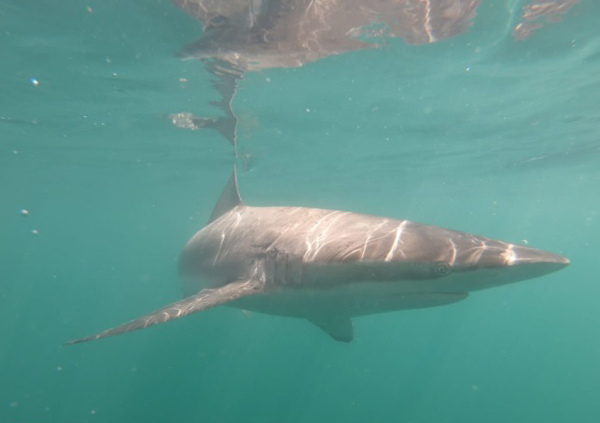
Every crew member will remember that day in November 2013 when they first spotted a Bronzie during a shark diving trip in Gansbaai.
It was a pretty normal start to the day with boats full of excited shark divers heading off to the summer diving area known as Joubert’s Dam. Already halfway into the trip, a shark behaving a little unusual was spotted. At first, the shark kept circling just far enough to make it almost impossible to identify it by species.
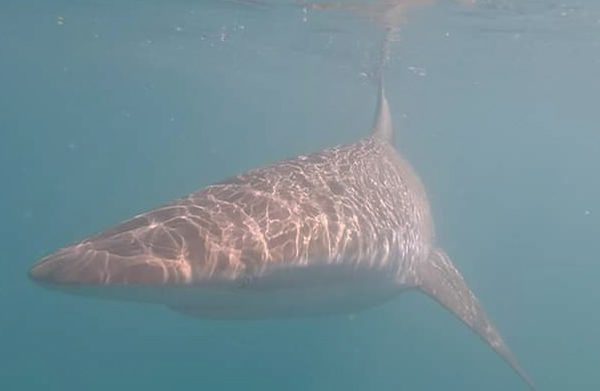
However, the coppery colour, blunt nose and slender build of this shark species were dead give-aways of a Bronze Whaler Shark. The surprise and amazement after confirmation of this species were infectious!
After that first sighting in Gansbaai back in 2013 everyone assumed that this would be a once off occurrence as it was such a rare and unheard-of sighting of this shark species!
However, to the delight of all the shark diving operators and their intrepid cage diver guests, the Bronze Whaler Sharks, Carcharhinus brachyurus. or Bronzies as they are fondly called, returned the next day in varying sizes, from 2.5 to 3 meters, and were very interested in the bait and decoy.
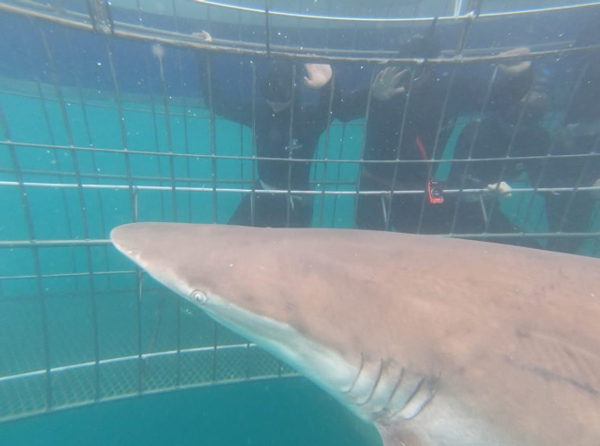
And then they returned in numbers....
The very active Bronze Whaler Sharks - sometimes up to 40 sharks on a single trip- have captivated divers ever since and were fondly christened by the locals as the Golden Sharks of Gansbaai.
Facts about the Weird and Wild Bronzies
-
Bronze or copper?
Named for its colour, the copper shark is one of nature’s most efficient killing machines. This creature has a thin but muscular body that allows it to cut through the water with little resistance and pursue its prey at high speeds. It kills victims with a single bite with its sharp, curved teeth. The copper shark has on occasion attacked people, but mostly like to round up big groups of fish and gobble them down in huge mouthfuls. It also has a taste for dead whales, hence their name.
Did you know that they are also called Copper sharks or Narrowtooth sharks due to their little narrow teeth?
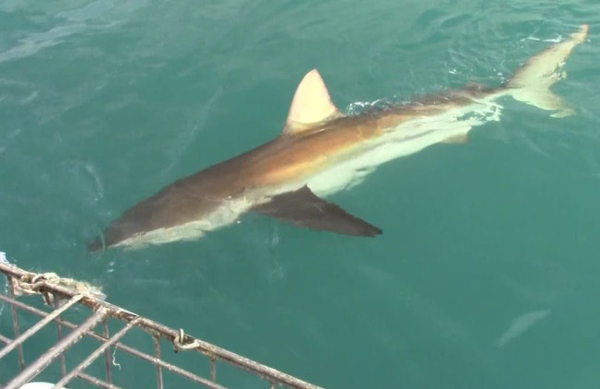
-
Does it glow?
The copper shark got its name from the copper-like colouring on the top of its body. Otherwise, this magnificent animal looks like a typical shark, with a streamlined body that helps it swim at high speeds when chasing prey.
-
Good Curves
This big fish has a nasty bite, which allows it to kill prey both large and small. The teeth in the upper jaw are curved so it can hang on to small, struggling prey or rip big chunks of flesh from larger victims.
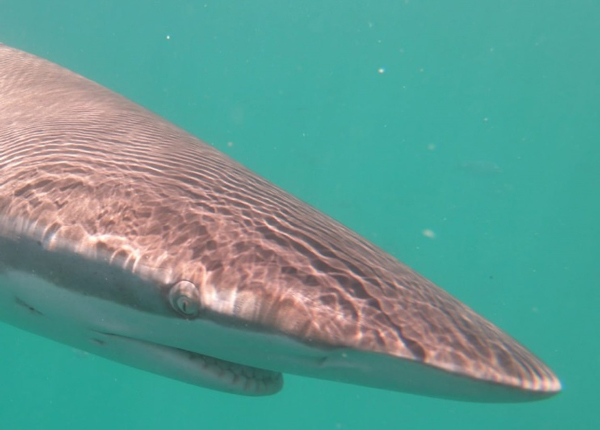
-
Shark attacks
The copper shark isn’t the most dangerous shark in the ocean, but when it attacks, it does some heavy damage. When hunting prey copper sharks takes a big bite out of its victim, then comes back around to take another; returning until the victim is dead. Scientists have been injured and killed when studying groups of copper sharks in feeding frenzies because the sharks mistook them for prey. Also, this shark likes to stay close to shore and of the several surfers that have been attacked about half of the victims managed to escape alive
-
Travel on
This shark likes cold water and can get choosy about the water in which it swims.
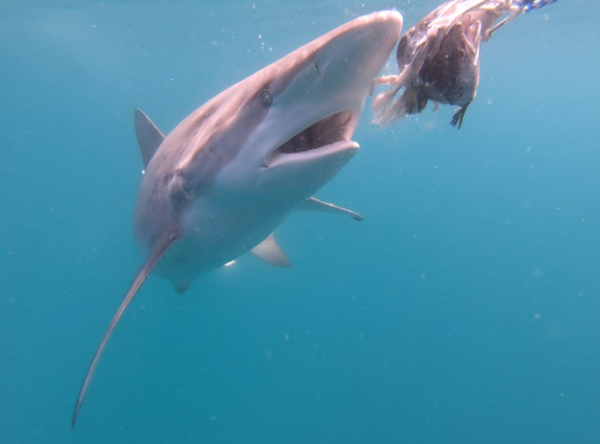
-
Dead meat
The copper shark is also known as the bronze whaler. It got this strange name from its colour bronze is the colour of copper) and its habit of feeding ferociously on the corpses of dead whales floating in the ocean. The 19th-century whaling fishermen named them so as they gathered in large numbers around harpooned carcasses of whales.
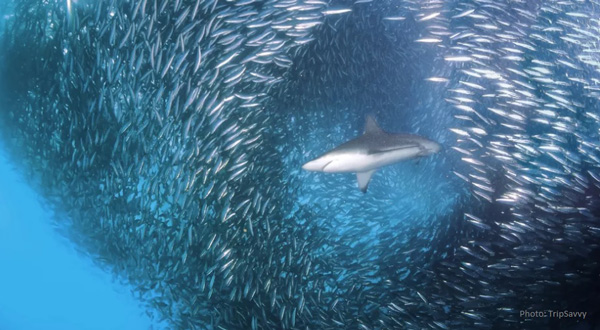
-
Protect eyes from injury
The nictitating membrane is the mechanism that a Bronze whaler shark uses to protect its' eyes.
The nictitating membrane is a thin but tough membrane or inner eyelid that can be found in a number of shark species including the Bronze whaler. It is drawn across the eye to protect it from damage especially prior to a feeding event where prey might inflight damage.
![]()
-
Round’em up
Copper sharks sometimes work together when hunting small prey such as sardines. The sharks circle large schools of these fish to round them in a tight group called a “bait ball”. They then swim through the bait ball with their jaws open and chomp up dozens of fish at once. These sharks are frequent visitors on the Sardine Run in South Africa, where each shark can consume millions of sardines.
Did you know?
Copper sharks sometimes team up with dolphins to hunt large schools of fish.

.png)